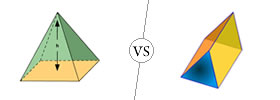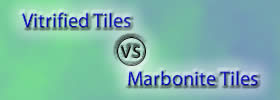Difference between Plywood and Veneer
Key difference: Plywood is a type of manufactured wood panel. It is made by gluing together plywood layers, also called veneers. These veneers are glued together with adjacent plies having their wood grain at right angles to each other. Veneer, on the other hand, refers to thin slices of wood that are practically peeled of the wood. The slices are usually less than 3 mm (1/8 inch) thick.
 Plywood is a type of manufactured wood panel. It is made by gluing together plywood layers, also called veneers. These veneers are glued together with adjacent plies having their wood grain at right angles to each other. This allows them to form a composite material. Cross-graining, i.e. having the wood grain at right angles to each other, reduces the tendency of wood to split, as well as reduces expansion and shrinkage. It also makes the strength of the panel consistent across both directions.
Plywood is a type of manufactured wood panel. It is made by gluing together plywood layers, also called veneers. These veneers are glued together with adjacent plies having their wood grain at right angles to each other. This allows them to form a composite material. Cross-graining, i.e. having the wood grain at right angles to each other, reduces the tendency of wood to split, as well as reduces expansion and shrinkage. It also makes the strength of the panel consistent across both directions.
Plywood has various advantages over traditionally wood. It is flexible, inexpensive, workable and re-usable. Furthermore, it can usually be manufactured locally. Plywood is also resistant to cracking, shrinkage, splitting, twisting and/or warping. It also has a high degree of strength. All these attribute combine to make plywood one of the most widely used wood products.
Plywood is further divided into:
- Softwood plywood - Is usually made either of cedar, Douglas fir or spruce, pine, fir or redwood and is typically used for construction and industrial purposes.
- Hardwood plywood – Made from hardwood, often from birch and used for demanding end uses. Birch plywood has excellent strength, stiffness and resistance.
- Tropical plywood - Made from mixed species of tropical wood.
- Special-purpose plywood
- Aircraft plywood
- Decorative plywood (overlaid plywood)
- Flexible plywood
- Marine plywood
- fire-retardant plywood
- moisture-resistant plywood
- sign-grade plywood
 Veneer, on the other hand, refers to thin slices of wood that are practically peeled of the wood. The slices are usually less than 3 mm (1/8 inch) thick. The thin slices can then be glued together to create either laminated wood or plywood. Plywood typically consists of three or more layers of veneer.
Veneer, on the other hand, refers to thin slices of wood that are practically peeled of the wood. The slices are usually less than 3 mm (1/8 inch) thick. The thin slices can then be glued together to create either laminated wood or plywood. Plywood typically consists of three or more layers of veneer.
The veneer can also be glued onto core panels, such as wood, particle board or medium-density fiberboard. This gives the said wood, particle board or medium-density fiberboard, the look of the wood that the veneer was cut from. The veer covered wood, particle board or medium-density fiberboard can then be used to produce flat panels such as doors, tops and panels for cabinets, parquet floors and parts of furniture. Veneer beading is a thin layer of decorative edging placed around objects, such as jewelry boxes.
Veneer is usually obtained either by peeling the trunk of a tree or by slicing large rectangular blocks of wood known as flitches. There are three main types of veneer-making equipment used:
- Rotary lathe – in which the wood is turned against a very sharp blade and peeled off in one continuous or semi-continuous roll. This is mainly used for plywood.
- Slicing machine – in which the flitch or piece of log is raised and lowered against the blade and slices of the log are made. This type of veneer is also referred to as "crown cut" and looks like sawn pieces of wood.
- Half-round lathe - in which the log or piece of log can be turned and moved in such a way as to expose the most interesting parts of the grain.
There are many various types of veneer available in the market:
- Raw veneer – has no backing on it and can be used with either side facing up.
- Paper backed veneer – veneers that are backed with paper
- Phenolic backed veneer – less common. Mainly used for composite or manmade wood veneers.
- Laid up veneer – raw veneer joined together to make larger pieces.
- Reconstituted veneer – raw veneer cut and at times dyed. Usually made from fast-growing tropical species.
- Wood on Wood – decorative wood veneer face with a utility grade wood backer that is applied to the opposing direction to the face veneer. Also called 2-ply.
Image Courtesy: unitedplywood.in, danzer.com









Add new comment